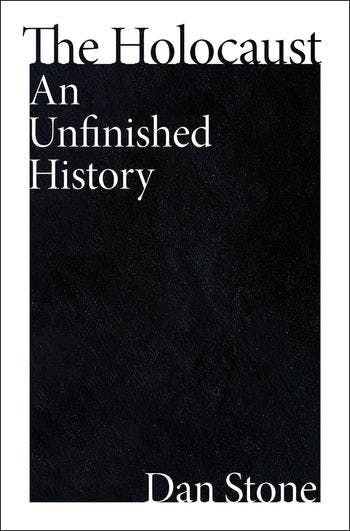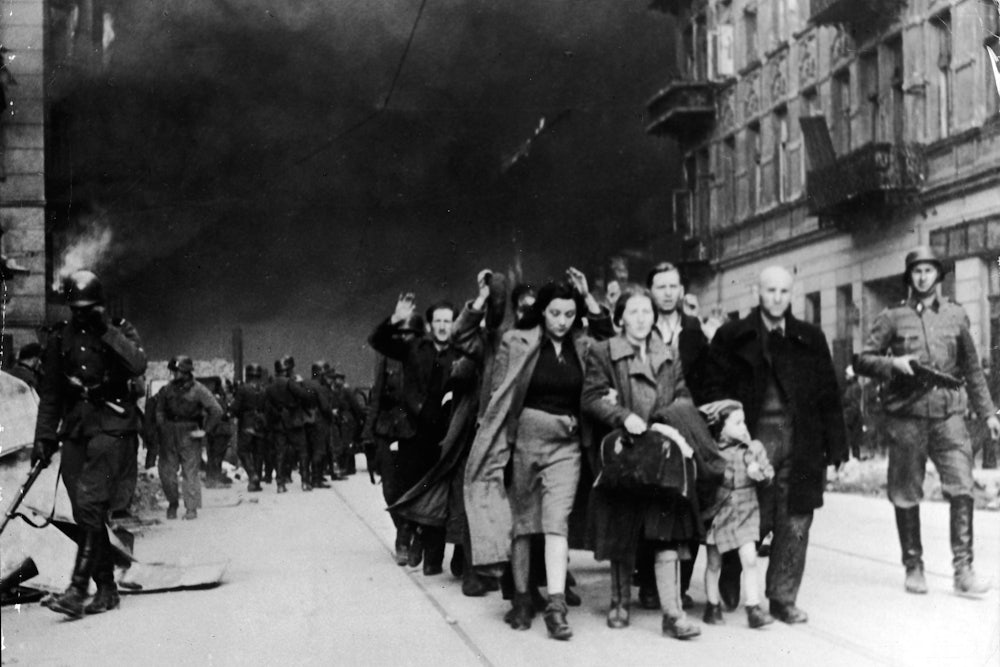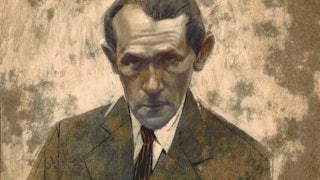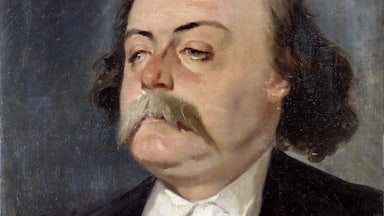Hardly a month passes in the United States, it sometimes seems, that some benighted politician doesn’t insist we should be teaching “both sides” of the Holocaust. Perhaps it shouldn’t surprise us, for it is the logical conclusion of the current panic over “wokeness.” An increasing number of conservatives and so-called moderates wish to evacuate history of its moral center and neuter its capacity to speak about racism. And if you don’t believe we should teach about slavery or Jim Crow, it’s just a hop, skip, and a jump to arguing that our classrooms should be giving equal airtime to the Nazi point of view. It is, of course, unsurprising that the party of “Jews will not replace us” should want to pervert Holocaust education in such a way.
For now, there has been sufficient outrage each time someone proposes something like this that the floated recommendation is retracted. But these brief flares of scandal hide the fact that knowledge of the Holocaust is, in fact, in decline. A 2018 poll found that 41 percent of Americans did not know what Auschwitz—the most infamous of Nazi death camps—was. As the last Holocaust survivors now die of old age and atrocities fade from living memory, those of us who study Nazi Germany and the Holocaust have begun to wonder just what kind of future this history has.

In the years after World War II, the Holocaust came to be interpreted as a singular crime, a genocide without precedent. It evolved to become a universal touchstone, foundational to efforts to craft international criminal law and the obligations of human rights. Today, it defines what historian Wilfried Mausbach has called a “shared moral universe” that stretches across borders. The hope is that by making the Holocaust central to how we imagine the past, as well as the obligations it places on the living, we make ourselves better, we inoculate ourselves from the virus of genocidal hate, we say, “Never again.”
How successful have these efforts been? Dara Horn, the author of People Love Dead Jews, has suggested that by telling feel-good stories of non-Jewish resisters, by putting off conversations about antisemitism in the here and now, by offering neatly packaged “lessons” that ultimately trivialize the mass murder of Jews, Holocaust education may be making antisemitism worse. Historians such as Dirk Moses have similarly leveled the critique that Holocaust memory has become an ossified set of rituals, a new “German catechism.” By insisting on the uniqueness of the Holocaust as well as the distinctiveness of Germany’s repentance for it, today’s self-congratulatory memory culture closes down difficult discussions, whether about the Israel-Palestine conflict, Germany’s pained history of colonial genocide, or even present-day antisemitism.
Dan Stone, one of the foremost Holocaust historians in the world, describes this problem in his new book, The Holocaust: An Incomplete History, as “the ‘beautifying’ of the Holocaust in the western world.” We remember the Holocaust, he insinuates, not because we take the injunction “never again” seriously, but because we want to reassure ourselves that such a crime could never happen in our world and that, if it did, we would surely be on the side of resistance and of righteousness. “Tears may flow” at Holocaust commemoration events, Stone writes, “but the truly destructive nature of the Holocaust for its victims—and for the societies they came from—and the radical implications of the Holocaust for our modern world are passed over in silence.”
Instead of presenting Holocaust history as a tidy affair wrapped in a bow with neat moral messages, Stone proposes that we examine its unfinishedness, its unknowability, and its very incompleteness. That is, he asks that rather than tell ourselves feel-good stories about having vanquished evil in the past, we sit in discomfort with the moral and historical chasm that the murder of six million beings opened in the fabric of history.
But what does it mean to say that the Holocaust is incomplete? It’s a question any reader might justifiably ask. After all, Allied forces put a stop to the murder of Europe’s Jews nearly 80 years ago. Leading Nazis were tried in the war’s aftermath, and Holocaust perpetrators have continued to face legal reckoning up to the present day. Nazis have not been in power anywhere in decades. In what way is this history incomplete?
It is a deliberately provocative title, which Stone uses to point to several specific areas of Holocaust history that are poorly comprehended, unknowable, or even misremembered. “There are still major parts of the history of the Holocaust,” he writes, “that have not been understood in the prevailing narrative.”
Part of the Holocaust’s unknowability stems from its origins. Stone points in particular to the role of ideology in spurring the mass murder. We know well, naturally, that Adolf Hitler and other leading National Socialists were rabid antisemites. Hitler’s infamous autobiography, Mein Kampf, is an antisemite’s manifesto, and Nazi propaganda was replete with antisemitic stereotype. But Stone insists that there is something unknowable or even mystical in the role that antisemitism played in Nazi thought. It was not merely “a logical outgrowth of Nazi eugenics,” he contends. Rather, “it grew from a mystical notion of ‘thinking with the blood,’” what the great Holocaust historian Saul Friedländer termed redemptive antisemitism: the notion that the “Aryan” race’s salvation lay in the extermination of Jewish people. The significance, to Stone, is that such hatreds do not have logical origins, nor can they be combated with reason. For our own world, increasingly characterized by misinformation, “fake news,” and conspiratorial thinking, it is a troubling conclusion.
There is also a long-standing mystery over when, precisely, Hitler and the rest of the Nazi leadership determined to murder all of Europe’s Jews. Historians have long shown how the Holocaust evolved in stages: from discriminatory legislation in the 1930s to the pogrom known as the Night of Broken Glass in 1938, to ghettoization and the mass shootings of Eastern European Jews in the early 1940s, to finally the industrial extermination camps that opened their gates in late 1941 and early 1942. It’s that last stage—the camps where Jews were murdered with poisonous gas—that has become the most iconic in our image of the Holocaust. The move from mass murder by bullets to mass murder by gas is also what countless historians have grappled with, trying to explain how, why, and when precisely the decision was made.
The mystery stems from the fact that the Nazis were careful about cleaning up their paper trail. Surviving documents employ euphemism in a vain effort to hide their true import. It also comes from the fact that Hitler notoriously detested writing down his orders, preferring to transfer commands orally to his top lieutenants. Thus, historians have never found a written Führer order commanding that Jews be deported to and murdered at the six extermination camps of Eastern Europe. Instead, scholars have had to painstakingly reconstruct more circumstantial evidence, such as notes about what Hitler said at various gatherings of leaders. On December 12, 1941, for instance, he told officials, “The world war is here, the destruction of the Jews must be the inevitable consequence.” These sources have led historians to conclude, as Peter Longerich writes in his recent biography of Hitler, that “it is clear that it was always he who set the agenda for the various stages of radicalization and controlled developments.”
The point is not whether the Holocaust was an intentional policy that Hitler ordered—to suggest otherwise in a state that functioned on the basis of his personal wishes would beggar belief—but rather that there is much about how the Holocaust evolved that we do not and likely never will fully know.
While the Holocaust developed as the direct result of Nazi ideology, Hitler’s orders, and the energetic efforts of Nazi leaders, Stone reiterates over and over again the extent to which it was a “continent-wide crime.” Here is perhaps the greatest gap in our contemporary understanding of the Holocaust to which the book points. Because it was a crime initiated, spurred, and in large part carried out by Germans, we have largely forgotten the extent to which the rest of Europe helped it along, sometimes even taking extermination into their own hands.
This forgetfulness, of course, suited postwar governments just fine. France under Charles de Gaulle perpetuated a myth of resistance that inoculated the country from reckoning with its own long history of antisemitism and the Nazi-aligned Vichy government’s eagerness to deport French Jews. It has allowed countries like Poland to imagine themselves exclusively as victims of Nazism. But while Poles were indeed targets of racist discrimination and murder by the Nazis, many were also happy accomplices to the mass murder of Polish Jews, as historians like Jan Gross have shown in horrifying detail.
In autumn 1941, the Romanian government deported their Jews to Transnistria, an eastern province that had been part of the Soviet Union. Exposed to the harsh winter, tens of thousands died between 1941 and 1942. Romanian authorities also engaged in mass shootings of Jews there, murdering tens of thousands more at a time. Up to 54,000 were burned alive and shot that winter in a single action at Bogdanovka, a concentration camp, between late December and early January. These murders, which were largely initiated and carried out by the fearsomely antisemitic Romanian dictatorship, have largely been forgotten in mainstream retellings of the Holocaust. Other victims, Stone points out, we will likely never know. They, their families, and their entire societies were eradicated too completely.
While Stone focuses on the collaboration and initiative of other countries in order to highlight that the Holocaust would not have happened (or at least not in the same way) were it not for the enthusiastic embrace of genocide by most European governments, he does so also to question our understanding of the Holocaust as an “industrial” or “streamlined” operation. Millions of Jews were shot to death in massacres like those in Romania. The so-called Holocaust by bullets claimed at least 1.5 million lives. But the early extermination camps were rudimentary affairs. The process at camps Treblinka, Belzec, and Sobibor, Stone writes, “with their wooden gas chambers and unreliable motor engines … was rampantly violent, about as far from the sanitized image of smoothly functioning genocide as one can get.” The image of mechanized death only came from the last stages of murder at Auschwitz-Birkenau, when hundreds of thousands of Hungarian Jews were deported and murdered in a matter of months: “the famous images of the ramp and the selection process and the notion, now deeply ingrained in Western culture, of the gassing process as industrial genocide.”
This distinction is important because by focusing on the allegedly industrial, systematic nature of the Holocaust, we give ourselves permission to ignore just how haphazard and ultimately human it really was. Instead, prevailing Holocaust memory allows us to mythologize the genocide as the result of satanic, inhuman forces, utterly unlike anything that ever existed or could ever exist in the world we inhabit today. Nothing, Stone insists, could be further from the truth. The Holocaust was a messy process that required the willing collaboration of millions of perpetrators and numerous governments spread across a continent. It arose from irrational ideologies that grew from wellsprings of dissatisfaction with modernity that still flow today.
By confronting these uncomfortable truths, Stone hopes to jolt us out of complacency. We have not, he suggests, sufficiently learned the lessons of the Holocaust. He sees the reluctance to recognize that the Holocaust was a Europe-wide crime (although it was conceived of and directed by the Germans, as he cautions again and again) as giving a pass to other countries, in some of which neofascism is flourishing today. Rewritten narratives allow perpetrator nations to claim the mantle of victimhood or give other countries license to ignore their own historical atrocities, confident in the knowledge that at least they did not commit the Holocaust. “Commemorating with ceremonies whose templates involves heads of state, a few victim testimonies and children’s poems,” he avers, “is insufficient to change the ways in which fascism in interwoven into the deep memory of western culture.”
This is the tension at the heart of this book and in the history of atrocities more generally: How is it possible to recount such memories in a way that ensures that they are not forgotten, while also forcing us, the living, to actually reckon with the horror of the crime and its implications for the present? How might we create collective memory with the power to shape the world we want to live in without allowing it to be captured by revanchist forces or ossified into a new set of unquestionable faiths? Are we perhaps asking too much of the past?
At the end of the day, the reason our understanding is incomplete is that the Holocaust was—from the Nazis’ perspective—successful. Six million Jews were murdered. Six million. That’s over 60 percent of Europe’s Jewish population in 1933 and over a third of the world Jewish population in 2020. Today, only around one million Jews continue to live in Europe. The murdered were people who never got to pass down their stories, many of whom never had the chance to fall in love, pursue careers, have children, or write books. When one person dies, it is said, a library burns. The Holocaust was a conflagration the likes of which we rarely see in human history—and not just of human flesh but of an entire culture and its future. It is a loss with which we still have trouble reckoning.
The history of the Holocaust is “incomplete,” then, not just because of our own discomfort with genocide but because there is no way to bring back the voices of the dead. History, however written, cannot change what has happened, it cannot make whole what was smashed, and it cannot right the wrongs of the past. “The Holocaust teaches nothing,” Stone insists, “except that deep passions that owe nothing to rational politics can move human beings to do terrible things.” The oft-invoked “judgment of history” is a fairy tale of the guilty conscience. All history can do is flicker dimly on the horizon, flashing now warning, now hope as we plow forward into the future’s vast unknown.






